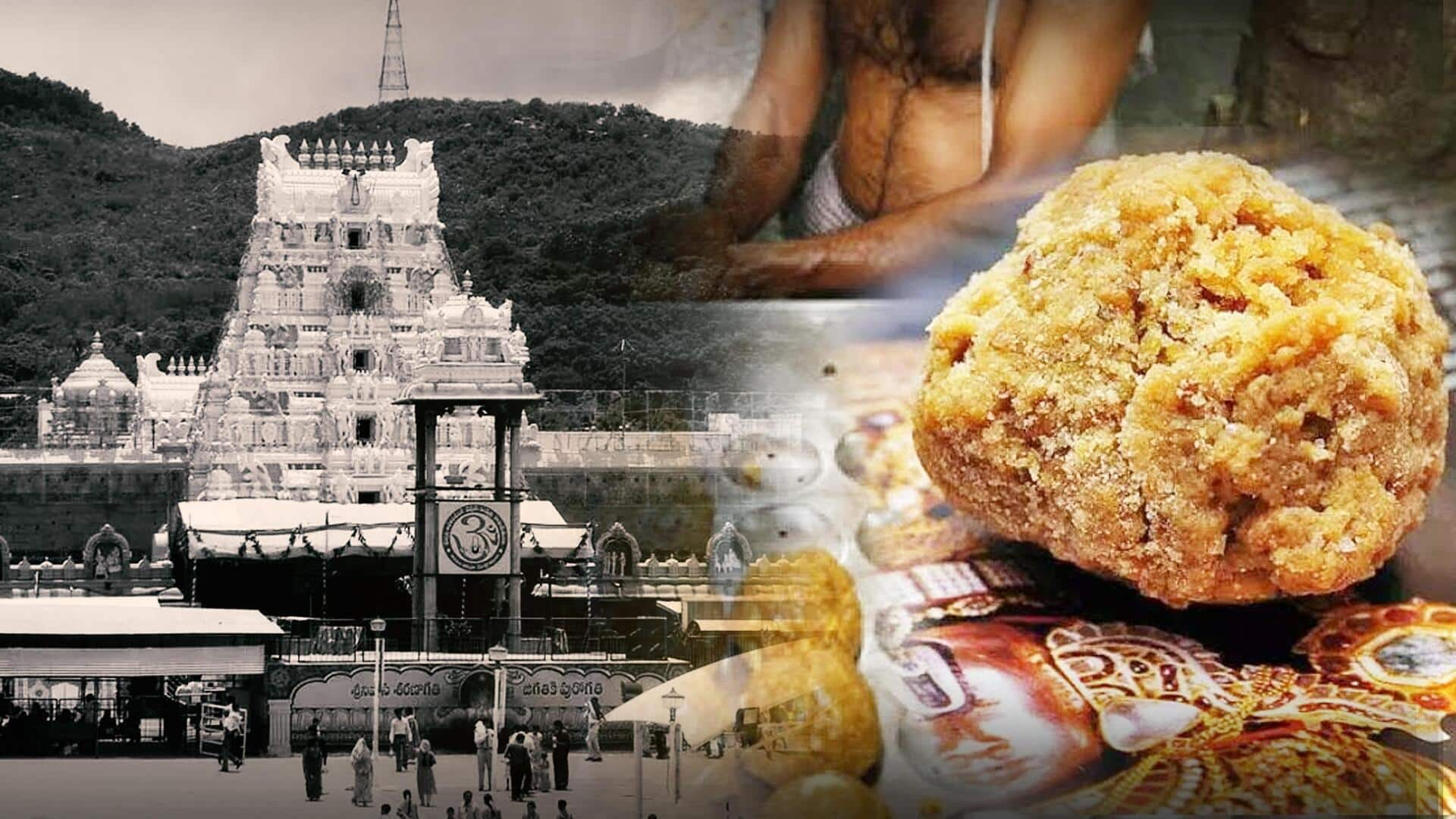
Tirupati laddoo row spotlights why ghee is prone to adulteration
What's the story
The recent controversy over the alleged use of animal fat in laddoos distributed at the Tirupati temple has brought to light a key issue in India's dairy industry: ghee adulteration.
Union Health Minister JP Nadda has sought a report on this matter, following accusations by Andhra Pradesh Chief Minister Chandrababu Naidu that animal fat was used during the previous YSRCP regime.
The high price differential between milk and vegetable fats is cited as a primary reason for this malpractice.
Pricing anomaly
Supplier's pricing raises suspicions of ghee adulteration
To recall, Telugu Desam Party Spokesman Anam Venkata Ramana Reddy expressed skepticism over the possibility of supplying pure ghee at prices offered by a supplier currently under investigation.
The supplier—AR Dairy Food Pvt Limited—based in Dindigul (Tamil Nadu), was able to provide ghee to the Tirumala Tirupati Devasthanams at ₹320 per kg.
This is significantly lower than market rates for buffalo and cow milk fat, which are sold by dairies at around ₹460 and ₹470 per kg respectively.
Supplier blacklist
Ghee supplier blacklisted for alleged adulteration
AR Dairy has been blacklisted after its ghee, used for making the iconic Tirupati laddus, was allegedly found to contain "foreign fats."
These included palm, coconut, soyabean, sunflower, rapeseed and other vegetable oils as well as animal fats (beef tallow, pork lard and fish oil).
The large price differential between milk and vegetable fats is believed to incentivize such adulteration.
For instance, refined palm oil wholesales at ₹120-125 per kg while tallow oil is even cheaper at ₹80-85 per kg.
Production constraints
Milk fat availability and ghee production in India
Apart from price differences, milk fat availability also plays a role in ghee adulteration.
Cooperative dairies procure an average 600 lakh kg per day (LKPD) of milk, out of which about 450 LKPD is marketed as liquid milk and another 50 LKPD as curd, lassi and other products.
This leaves roughly 100 LKPD for the manufacture of commodities like skimmed milk powder and fat.
Private dairies process an equivalent quantity into these products.
Market dynamics
Ghee is a relatively scarce product
Considering a 5% fat content, the average for buffalo and cow milk, this 200 LKPD would yield an annual ghee production of 3.65 lakh tons by the organized dairies.
This figure is significantly lower than the 250-260 lt of vegetable oils available, making ghee a relatively scarce and premium fat.
Established dairies prefer to sell ghee in retail consumer packs or use it for higher-value products like ice-cream.